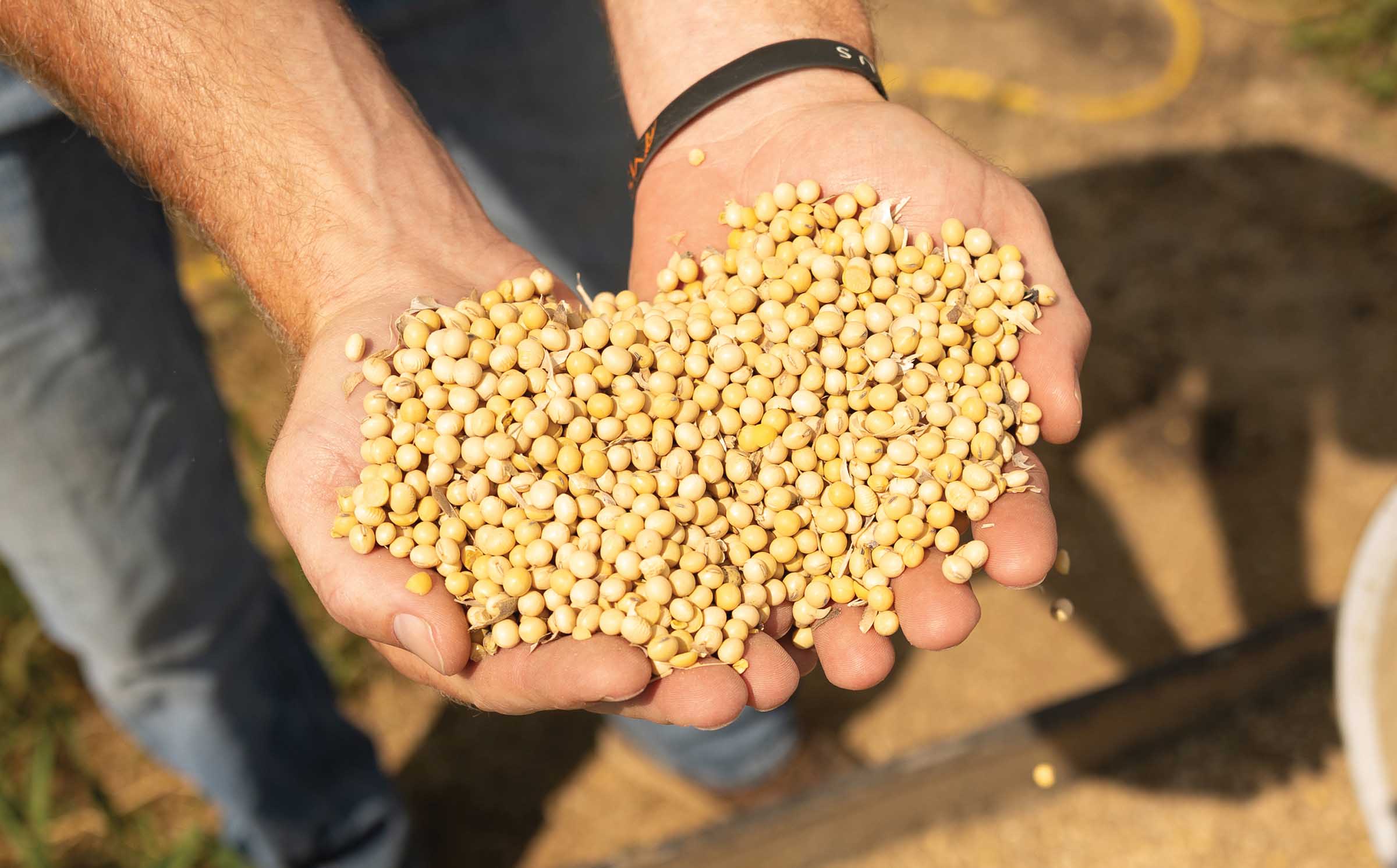
(Photo: Iowa Soybean Association / Joclyn Bushman)
Should you sell following fall harvest or wait?
September 3, 2024
What should farmers look for when it comes to pricing their grain? The variables are many, but having a marketing plan is key.
Craig Turner, a commodities broker with StoneX, says strong demand and/or fewer supplies strengthen grain prices. But selling at harvest time right off the combine may not be the best time to market those beans.
The better time, generally speaking, is in the spring.
“The best time to sell is usually in the March, April timeframe when the market has the most weather premiums built in,” he says.
Making sales in September and October around harvest are rarely ideal.
“You’ve got to be more aggressive in the wintertime, during the rallies from South America or in spring like March and April,” Turner says.
Nick Repke, a grain marketing advisor with Kluis Commodity Advisors agrees marketing grain off the combine at harvest time can be tough when supplies are the greatest and “prices are typically the worst.”
April, May, June he suggests can be a much better time to sell, but farmers should have a marketing plan in place. Turner says farmers need to start thinking about their marketing plan even before they plant.
“If we get to harvest time in September and October, the problems you might have with the old crop, well, it’s hard to mitigate,” he says. “The market is giving what it’s giving.”
“Having that plan,” Repke says, “allows farmers to perhaps sell some grain in the fall, and later store that grain and look at six months, 12 months and 18 months down the road and price that grain accordingly.”
He adds that part of the plan for any farmer should be knowing what their break-even figures are before marketing, regardless of the time of year they wish to sell.
“Over the last 10 years or so, historically speaking, April, May and June have been the best months to price soybeans for fall delivery,” Repke says.
“Again, I would recommend they need to know their cost of production,” he says. “Some farmers don’t know what it takes to raise a bushel of beans and it’s very difficult to tell anybody when to sell if they don’t know if they’re making money or losing money.”
Overseas influence
Grant Kimberley, the senior director of market development for the Iowa Soybean Association (ISA), says farmers have been challenged by what’s happening overseas.
While China has been looking to increase purchases globally, they are turning to a different part of the world as opposed to the United States.
“Unfortunately, they are looking to buy from Brazil,” he says, adding that with the total demand picture from China, many believe they’ll come back to the table with the United States.
And the weakeness of the Brazilian real has been impacting overall numbers.
According to Bloomberg News, a selloff in Brazil’s currency this summer helped shield farmers there from this year’s price plunge, giving them an edge over the United States. The real has lost 11% in value against the U.S. dollar as of July 2024.
Bloomberg noted that a weaker real means farmers in Brazil can withstand lower commodity prices much more than their American counterparts.
Kimberley, however, doesn’t want farmers to think it’s all doom and gloom.
“We think soybean demand will look a little better in the next year and there always seems to be a weather problem somewhere in the world,” he says. “Over the course of a 12-month period, when those opportunities come, we need to get ready to sell.”
With additional soybean crush, combined with demand for biofuels and the diversification of both oils and meal, exports are expected to increase.
Optimism from the field
ISA District 4 Director Marty Danzer from Carroll knows the market always fluctuates.
“My gut feeling is that I don’t think the bushels and acres are there that they say there are,” he says. “I see a rebound coming.”
While every year is different, typically Danzer forward prices about one-third of his crop before he combines in the fall.
“It might be six months or a year in advance, but we watch the markets daily,” he says. “If we have to sell some overrun after harvest, we will. We store a lot of our grain, both corn and beans, and whenever the opportunity arises, we sell.”
Danzer uses a market agent sometimes, but most of the time they market and sell independently.
“I think with the soybean market, the opportunities are going to be there with the oil and the sustainable aviation fuel,” he says. “I’m much more optimistic about beans than corn — they’re going to come back. Farming goes in cycles — you just have to ride it out.”
Back